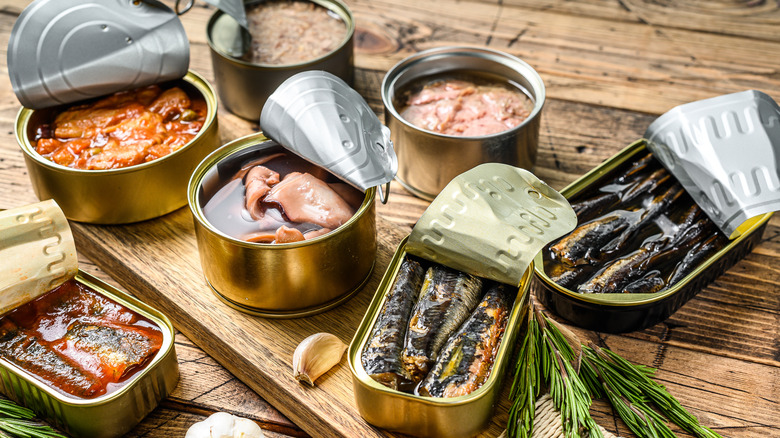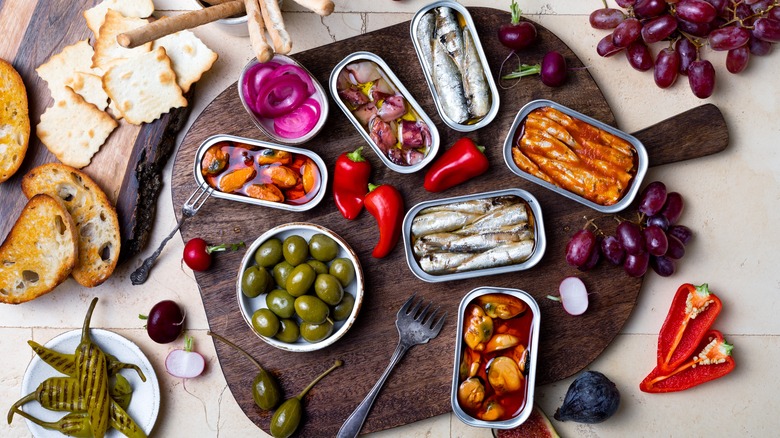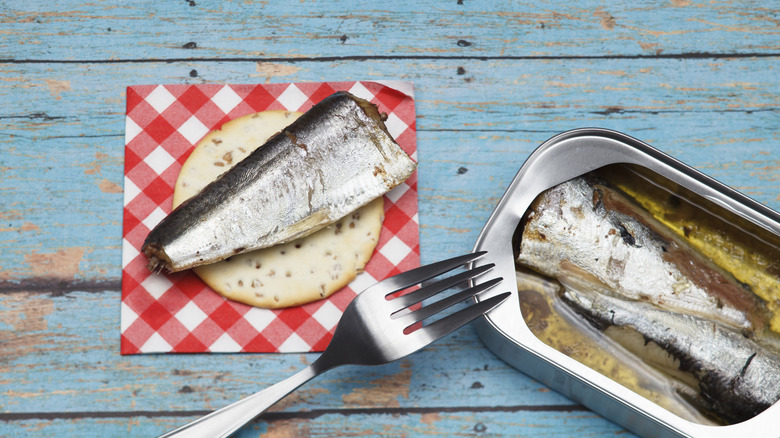If You're On A Budget, Don't Knock Canned Seafood For Your Charcuterie Board
Canned food catches a lot of smoke in popular conception. Some of this is fair — there are definitely questions about the quality and provenance of certain canned goods, and humanity tends to put food in cans that probably shouldn't go there. From canned whole chicken and canned peanut butter and jelly sandwiches to a canned full English breakfast, there's seemingly nothing humans won't try to jam into a cylindrical metal container.
But some stigma around canned goods is unwarranted and heavily based on disdain for what's often considered food for the less economically privileged. Either consciously or subconsciously, Americans don't want to be seen as partaking in ultra-budget-friendly food — and that's a situation where we should reconsider. While more cost-efficient than freshly caught, certain canned goods see little drop in quality; maybe the best example is canned seafood. With just a little know-how and plating, your guests probably won't be able to tell the difference between canned and fresh stuff on a charcuterie.
Canned fish is economically advantageous, and doesn't taste bad, either
Plenty of people react with instinctive negativity at the very thought of something like canned clams or canned salmon, but the truth is canned seafood is a common part of American life. Canned tuna has become so ubiquitous that when you mention canned fish, people don't even think about it, despite the fact that it is, by definition, a can of fish. Although certainly more divisive than canned tuna, anchovies and sardines are also things we're used to seeing in cans. But in general, seafood takes to the canning process better than certain other foods, tending to hold onto both its flavor and texture. It also very obviously lasts much longer (that's the whole point of canning), so why not save yourself some money with it?
Sure, canned seafood doesn't look great just sitting there in the can (nothing does), but that doesn't mean it tastes bad. If you're making a salmon dip using canned or fresh salmon, most people aren't going to notice the difference, nor should they. Something like sardines can also be served on crackers and still look lovely. In most cases, you're not getting increased quality from using fresh seafood in such situations, so why pay a premium just for a placebo effect?
Canned seafood goes great in charcuteries
And it's not just that canned seafood is cheaper. Unless you happen to live near a coast, there's a chance your "fresh" fish isn't particularly fresh anyway; in many cases, frozen salmon is actually more fresh than what gets labeled as the "fresh" stuff. Canned seafood may have a stigma attached to it, but it's not markedly more unhealthy than "fresh" seafood in, say, the Midwest — and it certainly doesn't taste noticeably worse as long as you know what you're doing with it. So don't be afraid of canned seafood or ashamed to use it because it's a perfectly good feature on a charcuterie board. The simple fact is that unless you're serving fish still in the can, your guests aren't likely to know that's what they're getting (not that they should judge it if they did).
Tinned fish may be unfairly maligned, but there are signs that's been changing recently. So why not hop on board the canned fish train and make it a key part of your boards? You won't regret it.


